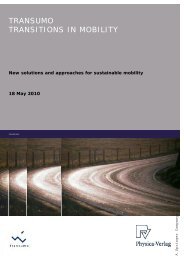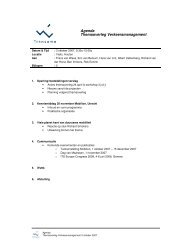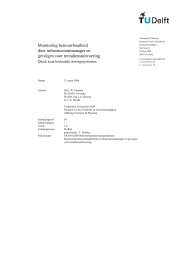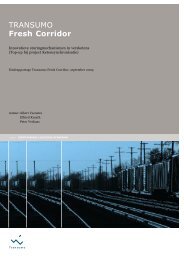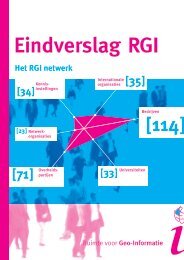Casestudie Breakdown prediction Contell PILOT - Transumo
Casestudie Breakdown prediction Contell PILOT - Transumo
Casestudie Breakdown prediction Contell PILOT - Transumo
You also want an ePaper? Increase the reach of your titles
YUMPU automatically turns print PDFs into web optimized ePapers that Google loves.
a centralized one. An isolated application is characterized by using its own features<br />
to raise an alarm, like built-in flashlights or sirens. A centralized application (e.g.<br />
XiltriX) transfers information of critical situations to a centralized unit that displays the<br />
current status of all monitored devices at one place.<br />
The third kind of temperature monitoring is an extension to the just presented one.<br />
Besides comparing actual temperature values to predefined intervals, temperature<br />
sequences of the single devices are stored. Again, this kind of temperature<br />
monitoring can be implemented as an isolated application as well as a centralized<br />
one. The gained historical temperature sequences enable data analysis in retrospect<br />
to obtain changes in behavior over time.<br />
Up to now, this data analysis is kept very simple. Beside basic visualization<br />
possibilities to evaluate the behavior manually or some provided statistical measures,<br />
current temperature monitoring products in the market do not contain more complex<br />
analyzing methods. 6<br />
Hence, the main task of this diploma thesis is to find additional analyzing methods to<br />
offer more precise status information of monitored cooling devices. To be able to do<br />
that, the next section will identify problems and potential sources of error, current<br />
sensor based temperature monitoring is faced with.<br />
2.4 Problems and Potential Sources of Error<br />
Data analysis (e. g. statistics) can lead to two different kinds of error<br />
([Scharnbacher04], p. 85):<br />
1. Error of first kind<br />
2. Error of second kind<br />
Based on a null hypothesis (H 0 = Cooling device is OK), four different cases are<br />
possible as pictured in Table 2-1. The aimed goal, within the setting of temperature<br />
monitoring of cooling devices, is the ability to always reach the right decisions. As<br />
referred in section 2.1, the task of monitoring within this setting is mission critical.<br />
Hence, an error of second kind has to be avoided in any case. In contrast, an error of<br />
first kind is only a false alarm that is indeed disturbing but not dangerous.<br />
6 See chapter 3 for details<br />
11



